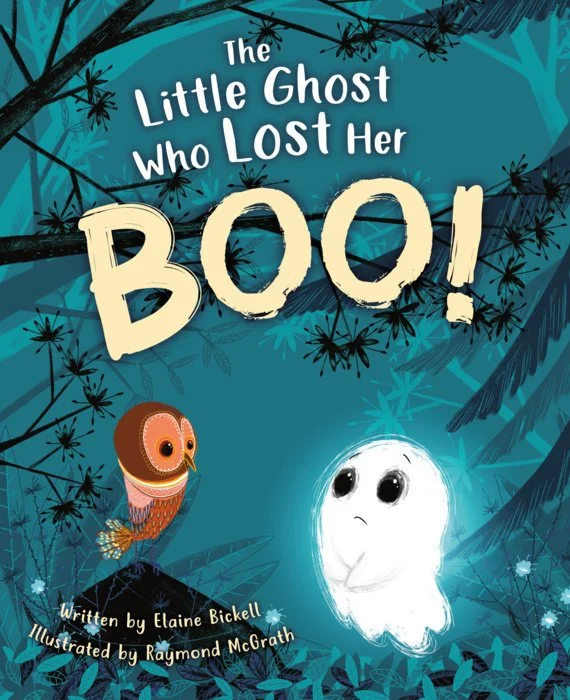Mystery Picture Books with Elaine Bickell
We are so excited to have Elaine Bickell join us today to share information about Mystery Picture Books!
Elaine is from London in the UK but has called Wellington in New Zealand home for the last 17 years. She lives in an old house in the central city with her partner, 3 children and two fox terriers and spends her time writing picture books for children. Her debut picture book, The Little Ghost who Lost her Boo! made it around the world in 2019.
I’m a big fan of Joy Cowley and I owe her a lot. It was winning The Joy Cowley award in 2018 that launched my writing career. I’m starting with Joy Cowley because she said…
“…authors tend to be either plot driven or character driven. Once we recognise which we are, we can do something to strengthen the side that is lacking.”
Joy’s words resonated with me because she made me realise I am a character driven writer. Plot is the side I have to work on to strengthen.
It wasn’t until I was asked to write this guest blog post that I realised The Little Ghost who Lost her Boo! is a mystery picture book. I had never consciously thought of it that way before. You may find this lack of awareness and intent somewhat unusual or confusing, but for me it is typical of being a character driven writer. Now, in hindsight, I realise the mystery picture book genre, that I didn’t know I was writing, served me up a classic plot structure and thereby helped me “strengthen the side that is lacking.”
In typical whodunnit, or rather ‘whereisit’ tradition, Little Ghost loses her Boo and heads off to find it with determination. Her journey spent searching, and the characters she meets along the way, make up the main narrative of the story. My plot “issue” was resolved by adhering to the well-trodden path of a mystery story.
So ubiquitous is the mystery picture book, and so familiar the plot structure, that I find I also inadvertently included many of what might be called its essential ingredients. I owe this I think to a subconscious familiarity born from years of reading widely. Writing this blog post has made me consider how much of my writing is in fact subconscious.
I’m going to return to Joy Cowley again at this point because she also said something along the lines of “…writing a book is much like giving birth. You gestate an idea for a period of time and then suddenly, only when it is ready, it pours out onto the page.” Again I find I can relate. I play around with an idea in my head for weeks, sometimes months, and occasionally years, before it is ready to be released onto the page. During this time a lot of the story gets written by my subconscious, or semi-conscious brain. It’s only at the end that I feel like I step in and actively shape the story.
So back to those mystery picture book plot essential elements that I included subconsciously or accidentally! Of course there must be a compelling mystery to solve, and a sleuth with a big enough reason to solve it because the consequence of not solving it needs to be a big deal. In The Little Ghost who Lost her Boo, the consequence of not finding the lost Boo is serious! A ghost without a Boo cannot do the very thing that ghosts do, scare people.
A mystery story also needs red herrings. Those little moments of hope that the mystery is about to be solved only to prove misleading. The Little Ghost has them in abundance.
And mystery stories need a satisfactory resolution. In this instance the reader steps in and helps solve the mystery. An invested reader is another essential mystery story element.
Once I started to think about the genre of mystery picture books I realised that some of my favourites fall into this category, but the one I have enjoyed reading to my children the most is “The Story of the Little Mole who knew it was none of his business.”
Someone does a little something on Little Mole’s head and he sets out to solve the mystery and find the culprit. A classic whodunnit mystery plot applied in the most unexpected way!



